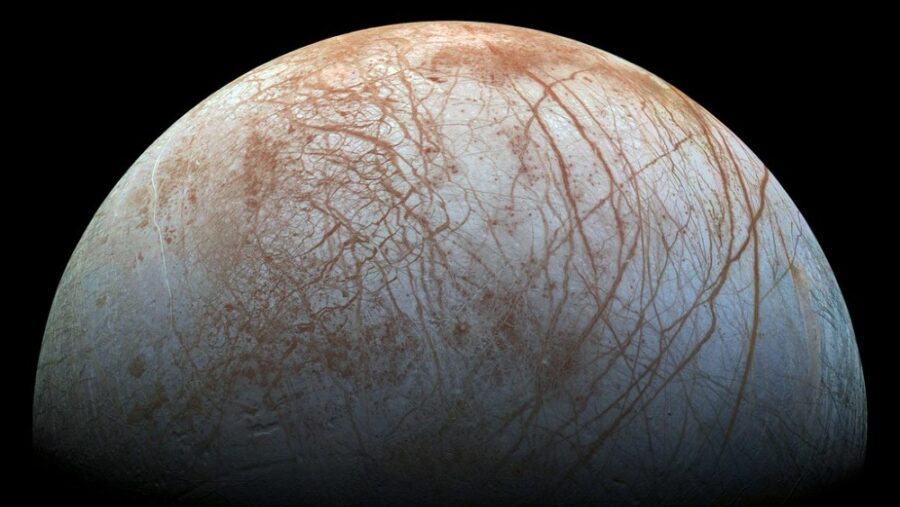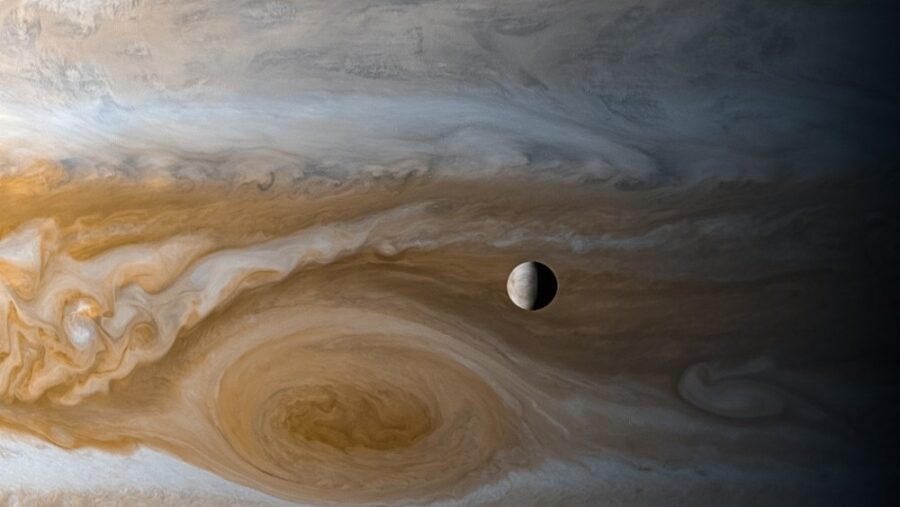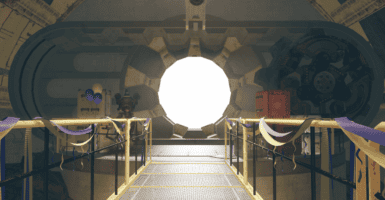Europa Reveals Mysterious Source Of Life Element, Is Life On Jupiter’s Moon?

Thanks to the wonder of franchises like Star Trek and Star Wars, many of us are primed to look into the far reaches of space for signs of new life. However, it turns out that we may not have to scope out a galaxy far, far away for possible evidence of life beyond our planet. According to Science Alert, carbon dioxide has been discovered on the surface of Jupiter’s moon Europa, sparking new speculation about hidden life on what we once thought of as a lifeless rock.
Carbon dioxide has been discovered on Jupiter’s moon Europa, driving speculation life could exist on the natural satellite.
This information comes courtesy of the James Webb Space Telescope, which has been providing data to scientists about Europa. According to the data, Jupiter’s moon has an entire ocean hidden beneath an icy shell. And just like that, this moon became one of the most likely areas in our entire solar system where we might encounter extraterrestrial life.
What is the significance of carbon dioxide on Europa? In short, carbon dioxide is considered one of the major building blocks of life. Its presence on a planet or moon means that the area might be playing host to some form of extraterrestrial life in the form of some kind of carbon-based lifeforms.
Teams have also discovered the presence of table salt in the Tara Regio area, and that salt is helping to make the area look more yellow in appearance than the pale lunar surroundings.
There are still some questions about the carbon dioxide detected on Europa’s surface. For example, the scientists aren’t completely sure if the dioxide that was detected came from the ocean hidden beneath the ice.
Right now, the prevailing theory is that the ocean is the source of carbon dioxide, but scientists haven’t ruled out other possibilities, including that it came from “rock-like carbonate minerals” that released carbon dioxide as radiation broke the minerals apart.
The presence of carbon dioxide on Europa is a big deal, but it’s not the only major discovery that scientists have recently made regarding the surface of the moon. Teams have also discovered the presence of table salt in the Tara Regio area, and that salt is helping to make the area look more yellow in appearance than the pale lunar surroundings.

It’s a cool discovery on its own, but the scientists involved are particularly interested in the fact that (between the salt and the carbon dioxide) we are finally getting a more three-dimensional understanding of this distant moon and its unique chemistry.
Right now, the prevailing theory is that the ocean is the source of carbon dioxide, but scientists haven’t ruled out other possibilities…
Incidentally, if you’re interested in these discoveries, you should know that we’ll be getting plenty of additional news related to Europa in the coming months and years. That’s because the European Space Agency launched a moon probe Juice back in April, and NASA will be launching its own Europa Clipper mission in October of 2024.
Both agencies will be sending their respective vessels near Jupiter to gain more data on Europa, and this will give us our best idea yet of whether or not extraterrestrial life is somewhere on the moon.
In the meantime, we’ll be enjoying these studies and reports that have breathed new life into our understanding of the cosmos. While Star Trek tells us humanity’s final frontier is on the far reaches of space, we must first learn everything we can about our own solar system. Our mostly automated technology means we won’t have to sacrifice any redshirts to gain this knowledge.












